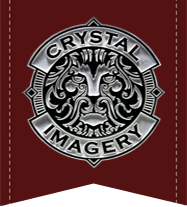Sandcarved Glasses vs Laser Etched and Engraved Barware

Comparison of Sandcarving, Laser Engraving, Rotary Etching and Screenprinting on Glassware
When it comes to personalized barware and glasses, there are many options available in the marketplace. Your choices range from a premium, high quality technique like sandcarving to the inexpensive, cartoonish look of screenprinting. In between, but still at the lower end of the quality spectrum are laser engraving and rotary etching.
Let’s begin with an explanation of each of the methods.
- Sandcarving glass is a process by which a sand-like media such as silicon carbide or aluminum oxide is directed through a nozzle under high pressure. The force of the “sand” hitting the glass carves away unprotected areas of the glass. A template material with the desired design is adhered to the glass. The template is created from a computer so anything that can be scanned, saved to or drawn on a computer can also be carved on the glass. On the template itself, the parts of the design that include the logo or art have been removed to allow the sand to pass through and carve away the glass. The longer the operator directs the sand to the glass, the deeper the carving. The limitations to the depth of carve are the wall thickness of the glass. Large areas of the design can be blasted leaving the protected areas of the glass to appear raised or 3D from the surface. The effect is a jaw-dropping 3-D effect that exudes quality and luxury.
- Laser engraving is the process of directing a high intensity beam of light generated from CO2 to the surface of the glass. The beam fractures the glass surface to create a rough frosted appearance. If you were to look closely at a glass that has been laser engraved, you would see an irregular and rough cut path where the laser beam has traveled. Designs from a software package can be loaded into the memory of the laser. The laser will travel back and forth until the design has been scratched into the glass. The effect has no depth and is a cheaper, standard method of personalizing your glasses.
- Rotary etching uses a faceted rotary diamond cutter that has to physically make contact with the glass. Functionally speaking, it works similar to a dremmel tool. A spinning bit, cooled with a stream of water, makes its’ way across the surface of the glass and fractures the areas to be etched. The results are cleaner than a laser but lacking in terms of depth of the etch and overall smoothness of the etched areas. This is the process the mall kiosk etchers use to put names and dates on wedding flutes and metal dishes. It should be noted that this process is much better suited for etching metal than glass. The effect is a flat, standard every-day look for personalization.
- Lastly is screenprinting. Most everyone is aware of the results produced from screenprinted glasses and mugs. They can be done in any combination of colors. The paint is applied to the glass through a mesh screen. The screen allows paint to flow through where there is design and blocked with there is no design. The result is a colorful, nonpermanent picture stuck to the surface. This process is usually preferred when one wants to buy large quantities of give-away type promotional products. It is cheap and fast and not typically used for gifting due to its’ cartoonish looks.
So now that you know how glasses can be personalized, the next question is which one is right for you? If lowest price is your only concern and you want the absolute cheapest glass you can get, the choice is clear. Screenprint is the cheapest option at virtually any qty 12 and up. Discount mugs.com charges about $15 per glass if you buy 12 glasses with a custom logo. The price drops to just under $8 if you need 36 or more logo glasses. What you need to accept with screenprinting is that your custom glass looks like you paid very little and will be probably not be used much by the recipient.
Next up in the quality department is laser engraved glasses. The laser beam can only fracture the surface of the glass and achieves no depth to the design. The frosting is light and hard to see. While the technology is super cool, using this method on glass is not desirable.
Rotary engraving is great at etching words into custom barware but like laser, it only scratches the surface and create fractures. The lines are more crisp than laser engraving but it doesn’t do well with logos where there are large areas to the design.
That leads us to sandcarving. Sandcarving blasts deep into the glass creating a 3 dimensional look and feel to the logo. The lines and edges are extremely crisp with super fine detail. Not many people have seen glassware that has been deep carved, mostly due to the fact that there aren’t many sandcarving companies out there. Etching and engraving have flooded the market for years. When you come across a sandcarving company, they warrant a closer look. The depth of carve creates a WOW factor that is non-existent in the other three techniques. Pictures don’t do this product justice. You’ve heard it before but it is absolutely true in this case – it is something you have to see to appreciate. I can assure you a sandcarved beer mug or whiskey glass is something that will be cherished forever. These personalized glasses are showpieces that can be used every day and then displayed on your bar rather than relegated to the back of your kitchen cabinet!


